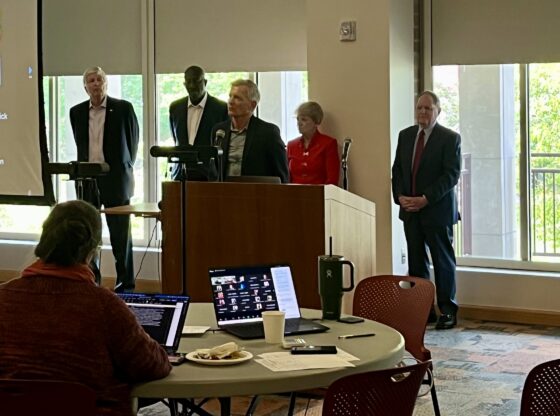Admiring the changing fall leaves on the DU campus is easy to do this time of year, and bestmastersprograms.org agrees. Judging a plethora of university arboretums and gardens, the website released a web-compiled list of the “50 Most Stunning University Gardens and Arboretums,” and DU appeared in forty-seventh place.
DU’s Chester M. Alter Arboretum, named after Chancellor Chester M. Alter, was founded in 1999 by then-Chancellor and well-known philanthropist Daniel L. Ritchie.
According to the Arboretum website, Chancellor Alter began a building boom which resulted in a 50-acre expansion of the campus in 1953, taking it from 75 acres to 125. The area around our campus was once covered entirely in high prairie grasses, and the majority of trees surrounding the greater DU area were planted by hand.
The Arboretum is noteworthy for multiple reasons; it contains nine state champions, meaning those trees are the largest specimens of their kind in the state of Colorado.
Besides their obvious beauty, these trees are from varying parts of the world. Some of these foreign specimens include the Shantung maple, which is native to North Asia, and the Trident Maple, native to China.
Marc Hathaway, Mastor Arborist for DU, discussed the growth of the arboretum in ten years, adding: “In 2003, the Arboretum had 1536 trees from 22 families, 37 Genera and 98 total Taxa. By 2013, the collection had grown to 2234 trees from 38 families, 80 Genera and a total of 287 Taxa. After a decade, we were able to nearly triple the diversity of our collection.” The diversification of the arboretum is crucial in reducing risks posed by pests, climate change and common diseases.
To find a map of the most exotic species on campus, you can visit DU utilities online to find an interactive map of the trees juxtaposed with campus grounds.
Hathaway mentioned how visitors and students often frequent the arboretum, and the “goal for the next ten years, in addition to improving upon what we started, is to expand the educational opportunities in the Arboretum.”
If you’re stumped on which trees they are, the prize-winners include the Cedar of Lebanon, the Crabapple, the Eastern Wahoo, the Horsechesnut, the Shantung Maple, the Trident Maple, the Weeping Grant Sequoia and the Yellow Buckeye.
From its creation in the 1960s, the arboretum continues to expand its roots across campus. This year, accession labels will begin to be added to all of the trees.
Mary Grace Ardnt, a sophomore from Minnesota, says “[The trees] really add to campus, it’s awesome to say that the campus is an arboretum, and I live in an arboretum. All the trees make it seem more homey, since home for me is a tree-based landscape.”
In addition to the state-champion trees, the Arboretum features about 2,200 varieties, representing over 250 species. One notable specimen is an oak planted by Lady Bird Johnson, the former first lady and wife of former President Lyndon B. Johnson.
As for the expansion of the arboretum, Hathaway added, “the Arboretum and DU in general have tremendous potential and I only see us getting better in the future.”
The Arboretum is funded by donations, which can be made at the arboretum website.











